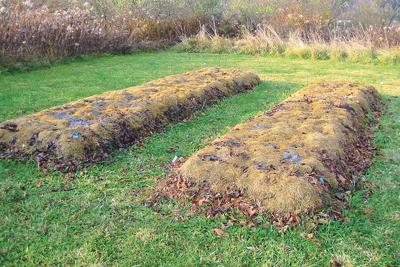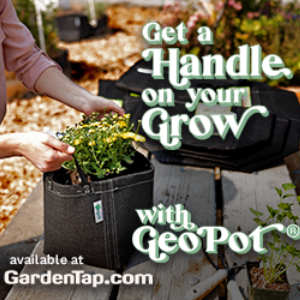
If you are a seasoned gardener and really enjoy growing your vegetables but hate weeding there is a great gardening method for you! It is called “lasagna gardening” and it was first introduced nationally by author Patricia Lanza, who pioneered this method. Her book, which has become a gardening classic, teaches the reader to have a fertile, weed free garden bed. The technical method is building layer upon layer of compostable materials that rise to a foot or more above the soil, and allow a no-dig approach to the garden bed. Over time, year after year, with no digging, organic material builds up in the soil creating wonderful worm laden topsoil and few or no weeds!
I have tested her gardening methods for years and really love it. After performing a soil test we discovered that our lawn and garden, composed of heavy clay soils, had extremely low levels of nitrogen; a lot of P and K but no N. (nitrogen, phosphorus and potassium.) I realized that my fist task was to add organic matter but that contributed to excessive weeds after some unheated compost deposited a bumper crop of lawn weeds to the mix making even more work and puny vegetables.
I headed to the library and found Patricia’s book. What a discovery! I already had a good pile of compost started so finding more ingredients was not an issue. What I discovered was that I was missing good old manure, so I had to find a good source (no antibiotic residue). Lucky for me, I live in an area that has many horse stables. Cow manure is good for a cornfield but 2-year-old horse or sheep manure is perfect for an organic vegetable garden. I contacted a friend in the equine business that happened to have mountains of the stuff. Twenty five garbage bags later, I had the active ingredient in for a lasagna garden.
Adding Layers to Your Lasagna Beds
A garden is only going to be as good as what is added to it. Bringing in topsoil from another place can be a disaster for your vegetables or other plants. Soil from an old field can contain agricultural chemicals that will inhibit germination of seed and stunt or kill vegetable starts. Compost material that has agricultural chemicals from spraying can also have the same effect. This can set your gardening efforts back several growing seasons.
How to Start
The best time to start a lasagna bed is in the fall. The bed has all winter to “cook” and one of the best ingredients to add is fall leaves which are available.
Mark out a bed or revive and old bed by putting down a thick layer of wet newspaper or cardboard. Follow this with a layer of compost, leaves, more compost, more leaves, horse manure, leaves, well aged compost, shredded paper or newspaper (no slick color inserts), etc, until reaching a height of at least a foot. Yes, a foot (12 inches) and higher if you have a raised bed. Water and wait until spring. Do not worry if the top layer hasn’t composted because you can plant veggie starts right in the pile or layer in a line of well rotted compost or soil and seed directly.
Some type of weed will always appear, so be prepared. Removing one kind of weed is easier than removing many kinds, so weeding is much easier. After 2 to 3 years of lasagna-raised beds, I am finally getting those giant healthy vegetables and herbs.
The Self-Heating Cold Frame
An added benefit to the Lasagna growing bed is that it is easy to make into a cold frame bed that is self-heated. Start your bed with a large pile of manure turning it twice to start the pile composting, and proceed using the directions mentioned earlier in this article. Surround the bed with reclaimed boards (no pressure treated please!) facing solar south. Insulate the bed around the outside with old straw bales, building up the back to allow your cold frame to slope towards the winter sun.
Cover it with old glass windows or a shower door, making sure the windows touch the edges and the sides of the frame. Add a thermometer to check temperatures and prop the windows up with a small pole or 2 x 2 on warm days. This is great for cold season crops like Broccoli and it will also over-winter onions, carrots and much more. There are many sites on the Internet with discussion and plans for cold frames. Market Gardener and educator, Eliot Coleman, has written many books of 4 seasons growing for northern climates, which include cold frames.
The Wood Chip Controversy
Many gardening books and other sources tell a gardener never to use wood chips as mulch because they “bind” nitrogen making it unavailable to growing vegetables. This may be so, but with the amount of soil and other composted material in a raised lasagna bed it doesn’t seem to be a problem and the wood chips do help suppress weeds. Wood chips break down over time adding beneficial fungi and bacteria while adding carbon to the composting bed. Personally, I would be more concerned where the wood chips originated, harboring diseases or herbicides. The search for good materials to compost is an ongoing but essential task for a lasagna gardener.
Using fallen leaves to mulch is a much better way to use them than burning them. It is a very effective and useful way to store carbon and have huge vegetables next summer.
Caron Wenzel is the owner of Blazing Star Inc. Blazing-Star.com a native plant seed nursery and soil amendment distributor, an environmental educator for the Garden Clubs of Illinois, educational consultant and coauthor of Ecoyards.
Related Articles & Free Email Newsletter
A Secret Bed Building and Potting Soil Recipe
Five Ways to Make Help Nature Make Topsoil




Comment here